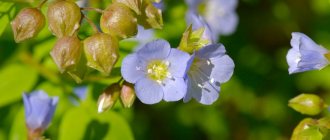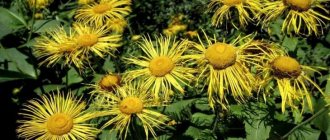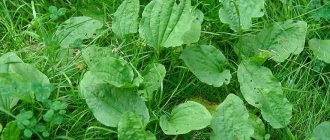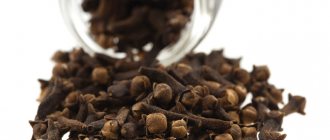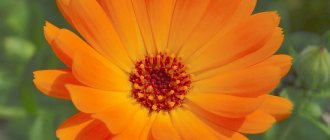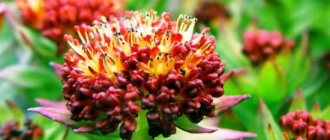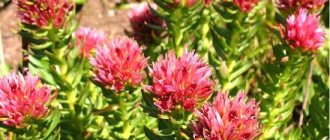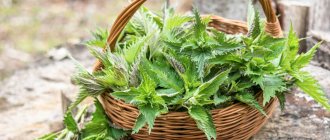For centuries, humanity has actively used anise to treat a variety of diseases. The greenish seeds of this plant were highly valued in Ancient Greece and Rome, and in the East they were even used to pay taxes. Today, anise seeds help people around the world fight various diseases, ranging from digestive system disorders to low libido.
What is anise?
Common anise, Pimpinella anisum, Anisum vulgare, Anisum officinarum, Anise - this is all the name of one plant, which, however, should not be confused with another anise, Chinese, also known as true star anise [1]. It is the Chinese plant that produces star-shaped fruits. Now we are talking about a completely different grass. The fruits of the common anise are semi-fruit seeds with 5 ribs.
Content:
- What is anise?
- Active Ingredients
- Anise: benefits and harm to the body
- Other beneficial properties of anise
- Dosages
- How to prepare seeds
- Anise oil
- Common anise tea
- Other Anise Recipes
- Anise in cosmetology
This herbaceous plant belongs to the celery family and can grow up to a meter in height. From thin spindly roots sprout fluted stems and leaves that form feathery lobes. In spring, white flowers with a delicate sweet aroma appear on the plants. In late August - early September, seeds form from them. The native lands for this plant are Egypt, Asia Minor, Greece. Although nowadays, if favorable conditions are created, anise can grow in almost any corner of the Earth.
Where does it grow?
Experts suggest that the birthplace of anise was the countries of the Middle East or the Mediterranean. Now the plant is bred for both food and medicinal use. Large areas under this plant are occupied in southern Europe, Mexico and Egypt.
In Russia, this culture has taken root in the Krasnodar region and the Central Black Earth regions. The height of anise can reach 50-60 cm; the plant blooms in mid-summer, creating complex umbrellas from small white flowers. After ripening, achenes with a spicy-sweet taste and specific aroma are formed in their place. The fruits ripen in August.
Active Ingredients
Anise seeds are 18% protein, 8-23% fat, 2-7% essential oils, 5% starch, 12-25% fiber, the rest moisture [2] .
The seeds have a delicious aroma due to the high concentration of anethole essential oil. They also serve as a source of iron, magnesium, calcium, zinc, manganese, potassium, and copper. These minerals are essential for maintaining heart function, proper blood circulation, bone health, and also help convert food into energy. The B vitamins contained in anise seeds are important for brain function.
Chemical composition
Common anise has a unique composition of chemical elements, which determines the properties and use of plant parts in medical and other industries. The main value of the plant is its fruits.
Anise seeds contain:
- coumarins;
- stigmasterol;
- vitamin C;
- vitamin P;
- vitamin B
In addition, the seeds are rich in macro- and microelements: Fe, K, Mg, Zn, Cu, Mn, Ca. Anise seed essential oil is rich in anethole, which gives the plant its characteristic odor, and anise acids.
Anise: benefits and harm to the body
The history of human use of anise as a medicine with a spicy aroma goes back at least 4 thousand years. As historians suggest, it all started from Egypt. There, according to ancient records, the plant was used as a diuretic and to treat toothache. Ancient Greek medical records mention anise as a respiratory aid, an analgesic, a diuretic, and a thirst-relieving herb [3].
The era of commercial use of anise oils began in the 1800s. Then the plant was noticed by manufacturers of cosmetics and detergents. In the food industry, it is known as a spicy additive to a wide variety of product categories, including alcoholic beverages, dairy products, jellies, puddings, meats, and candies.
Anise essential oil, as well as teas made from it, are widely used in medicine. For what purpose? This is what we will now try to understand.
Medicinal properties of anise [4]:
- facilitates expectoration;
- relieves bloating (including in children);
- acts as an antispasmodic;
- works as an antiseptic;
- soothes coughs in bronchitis and asthma;
- relieves pain from laryngitis and pharyngitis;
- relieves insomnia;
- stimulates appetite;
- relieves abdominal cramps;
- reduces nausea.
In addition, anise oil is used in folk medicine to treat head lice, scabies, and psoriasis. For nursing mothers, this remedy is suitable for increasing lactation [5].
Contraindications for use
Taking medications based on anise, as well as using the product as an aromatic seasoning, is contraindicated during pregnancy, as it can lead to uterine bleeding and premature birth. In addition, the seasoning should not be used if:
- gastritis with increased secretory function;
- stomach ulcer.
Eating anise may cause an allergic reaction. As a new product, it is added gradually, observing the body's reaction.
Other beneficial properties of anise
In addition to the mentioned medicinal effects, other properties of this plant are known. In particular, due to its antibacterial effect, anise is included in some toothpastes. Its anti-inflammatory properties have been compared to the effect of aspirin.
Thanks to its antioxidant properties, anise essential oil protects DNA cells from free radicals and prevents the formation of malignant tumors.
There is an opinion that anise can lower cholesterol. A 60-day experiment showed that daily consumption of seeds in powder reduces blood sugar levels by 36%, and also regulates the concentration of cholesterol and triglycerides. Crushed anise seeds applied to the forehead, neck or temples relieve headaches, particularly during migraine attacks. Experiments on rats have shown that anise promotes the absorption of iron, thereby serving as a preventative against anemia [6].
This plant also has sedative properties. Anise contains thymol, linalol, terpineol and eugenol, which reduce the appearance of nervousness and anxiety.
Interestingly, anise (seeds) belongs to the group of aphrodisiac plants. In addition, it has mild laxative and diuretic effects [7].
In combination with sassafras oil, the plant acts as a means to destroy insect pests (moths, bedbugs, cockroaches, lice) [8]. Fishermen add anise to their bait.
In the food industry, it is added as a seasoning to meat, fish, soups and sauces, pickles and confectionery.
Cultivation
Anise seeds can be grown industrially as well as privately. Star anise is sown on chernozem, loose soils fertilized with humus. It develops well on well-seasoned loams and sandstones. In the spring, potassium and nitrogen mixtures are added to them, and in the fall, when the harvest is harvested, phosphorus fertilizers are added.
Seeds from last year are used for planting. It is better to sow them in the spring, as early as possible, because the plant is not afraid of frost. Seeds are planted in beds at the rate of 1 g per 1 m 2 of land. After 20 days, the seedlings will hatch, which must be kept clean from weeds by regularly loosening the soil between them.
However, if you do not want to collect or grow anise yourself, you can easily buy it at any pharmacy. Prices for a bag weighing 50 grams fluctuate around 100 rubles.
Dosages
Today there are no clearly defined norms for the consumption of anise, just as there are no calculated daily norms for it. Most often, 0.5 to 2 grams of seeds or 0.2-0.3 ml of essential oil are used to treat digestive system disorders.
In the form of an infusion, usually take 1-2 teaspoons of crushed seeds per glass of boiling water. In the form of oil, herbalists advise consuming 1 drop of the substance with half a teaspoon of honey.
This plant is considered safe for humans, however, abuse of seeds or essential oil can cause side effects in the form of an allergic rash, difficulty functioning of the respiratory and digestive systems. An overdose of essential oil causes vomiting, convulsions, and sometimes pulmonary edema, paralysis, mental disorders, and coma.
The main contraindication for taking anise preparations is pregnancy, since this plant has abortifacient properties.
Spreading
The grass grows everywhere in the Middle East, the USA, and southern parts of Europe. In Russia, these are the Voronezh, Belgorod, Kursk regions, and Krasnodar Territory. The plant is unpretentious, does not make great demands on growth conditions, and grows in well-lit areas. But it is undesirable to collect it in meadows, clearings, and other wild conditions, since it is very similar to other representatives of the Umbrella family. Many of them are unsafe, even poisonous.
Therefore, before picking the plant you find, you need to carefully study the characteristics of the specimen.
Anise oil
Anise oil is obtained from the seeds of the herb through steam distillation. The highest quality product is obtained from ripe seeds located in the center of the umbrella. The range of uses of anise oil is extremely wide - from the food industry to pharmacology.
The chemical composition of anise oil varies depending on where the herb grew. In most cases, 80-90% of the substance is anethole, which gives the product a specific odor, as well as some other chemical elements [9].
Anise oil has antibacterial, antifungal, antioxidant, and expectorant properties. It is often included in cough syrups and lozenges. Thanks to its special composition, it loosens mucus in the respiratory tract, making breathing easier for asthma and ARVI. Antibacterial properties make it effective against Staphylococcus aureus, Streptococcus, and Escherichia coli. The list of fungi that are afraid of anise also includes Candida. The relaxing properties of the oil help relieve cramps and spasms of various origins.
How to make anise oil
Industrial production of anise oil is a labor-intensive, multi-step process, but small portions of the product can be made at home. For this you will need:
- anise seeds (dry);
- carrier oil (for example, almond);
- mortar for grinding seeds;
- gauze;
- glass container.
Dry seeds should be crushed in a mortar until the oil comes out (but not to a powder consistency). Pour into a glass container and add the base oil (the liquid should completely cover the seeds). Close the container tightly and place in the sun (this will speed up the release of oil from the crushed seeds). Strain through cheesecloth. Store prepared anise oil in a cool, dry place.
Procurement of raw materials
Fresh green young leaves are cut for preparing salads and other dishes as needed. If desired, they can be dried. Cutting is carried out early in the morning in the absence of dew. The collected raw materials are laid out in a thin layer away from sunlight in a well-ventilated area.
To harvest seeds, the stems are carefully cut, tied into bunches and dried. Today, gardeners grow several varieties of anise on their plots with early, middle and late ripening periods. A sign that you can start collecting seeds is the darkening of the boxes. Dried umbrellas are threshed, sifted, separating seeds from debris, and packaged in paper bags, linen bags, and glass jars. The harvest can be stored for no more than 3 years.
After cutting the stems (in August), they begin harvesting the roots. They are carefully dug up, washed thoroughly, removing any remaining soil, lightly dried, cut into small pieces, and then dried or frozen in the freezer. Fresh, uncooked roots can be stored in the refrigerator for 2 weeks.
Common anise tea
When the disease has tightened the throat and it is difficult to swallow, a persistent cough of any origin (bronchial, allergic, asthmatic or after smoking), anise tea will help get rid of unpleasant symptoms. It is prepared from fresh or dry seeds of the plant.
Another beneficial property of tea is the treatment of flatulence, getting rid of the feeling of heaviness after overeating, and, like ginger, anise relieves nausea.
If you sweeten your drink with honey, you can get an alternative to high-calorie drinks, and the antibacterial properties of anise will freshen your breath after drinking tea.
Seed tea recipe
To prepare anise tea, you will need a teaspoon of seeds and a glass of boiled water. You need to put the infusion on the fire and boil for no more than a minute. Let it brew. You should drink a glass of anise tea after each main meal. This decoction is effective for bronchitis, asthma and slow digestion.
Alcohol tincture
Anise tincture is made by infusing the seeds of the plant in vodka. The strength of the drink reaches 50˚. In Rus' and Europe, the drink appeared during the time of Ivan the Terrible and immediately became popular.
Currently, anise tincture with alcohol and vodka is produced in many countries.
Using it helps:
- increase your appetite if you drink a little before meals;
- eliminate pathological microflora of the gastrointestinal tract and respiratory organs;
- normalize stool for constipation or diarrhea;
- for inflammation of the lower respiratory organs, if you add 5-6 drops to tea or chest collection;
- thin mucus;
Common anise, its medicinal properties help thin mucus. - relieve cramps during menstruation;
- to stimulate lactation;
- cure gum disease and eliminate oral odor;
- cope with the treatment of sore throat.
It is not recommended to abuse the tincture, remembering that it is an alcoholic drink. Typically, the intake rate is limited to a few drops, teaspoons or tablespoons, which are added to water or tea. It is prohibited for use by patients with epilepsy, in a state of overexcitation of the nervous system and in the presence of allergic reactions.
Other Anise Recipes
General strengthening tincture
Pour 40 g of seeds into a glass of vodka. Leave for a week to 10 days. Take 20-25 drops three times a day.
Mouthwash infusion
2 tsp. Mix the seeds with a glass of boiling water. After an hour, strain. Rinse your mouth and throat several times a day.
Anise decoction
Pour 20 g of seeds into 200 ml of boiling water. Cook for 15 minutes, then leave for another 20 minutes. Strain, add 20 g of honey and the same amount of cognac. Take 1 tablespoon warm three times a day.
Related plants
Anise is often confused with star anise from the Schisandra family. This is due to a very similar smell. Its fruits are unusually reminiscent of spotted hemlock - smaller in size with bare, wavy ribs. They are similar to common korysh. It is also called dog parsley. Its seeds are bare, have greenish-brown grooves and hard light ribs, the leaves resemble parsley.
They are also confused with the fruits of black henbane from the nightshade family.
Anise in cosmetology
Anise oil is an excellent remedy for improving the condition of sagging skin. The remedies suggested below are easy to prepare yourself at home.
Mask for aging skin
Best materials of the month
- Coronaviruses: SARS-CoV-2 (COVID-19)
- Antibiotics for the prevention and treatment of COVID-19: how effective are they?
- The most common "office" diseases
- Does vodka kill coronavirus?
- How to stay alive on our roads?
Add 2 drops of anise essential oil to 1 tablespoon of carrier oil (any vegetable oil). Mix thoroughly and apply with light massaging movements to the skin of the face, neck, and décolleté.
Rejuvenation mask
Add 1 teaspoon of honey and 1 drop of essential anise oil to 2 tablespoons of sour cream. After applying to the face, leave for 10 minutes. Remove any remaining residue with a paper towel.
Mask for skin elasticity
For this remedy you will need 1 tablespoon of grated carrots, 2 tablespoons of cottage cheese, 1 teaspoon of anise decoction. Mix all ingredients until smooth. Keep on face for about 10 minutes.
Moisturizing mask
Prepare a paste from 2 tablespoons of grated cucumber and the same amount of oatmeal, 1 teaspoon of anise seed decoction. Apply with light movements to the face, after 10 minutes rinse with warm water.
Preparatory work
Growing anise should be done on the basis that its growth period lasts from 120 to 140 days. Thus, with favorable temperatures and sufficient rainfall, it will be possible to collect heavy grains already in early August.
Before planting, the bed is lined with grooves, the distance between which is half a meter. If the snow has melted a long time ago and the soil has had time to dry well, then the furrows must be thoroughly watered, since anise is reluctant to germinate in dried soil.
The anise sowing scheme also allows for a closer arrangement of rows up to 35 cm. However, lovers of rational use of space should be well aware that denser crops will inevitably cause plants to compete for light and make it easier for them to be damaged by pests.
Interesting Facts
It is better to buy common anise seeds whole, paying attention to the color. The dark, brownish color of the seeds (instead of the usual gray-yellow) is a sign that they are old and one should not expect special taste and aroma qualities from them. It is recommended to store the spice in tightly closed jars - away from direct sunlight.
Sources:
- Great encyclopedia of traditional medicine. – M.: OLMA Media Group, 2012. – 896 p. – (Life and health).
- Izotova M. A. Favorite spices for health and beauty. – M.: Eksmo, 2008. – 352 p. – (The best methods of healing).
- Culinary encyclopedia of Cyril and Methodius-2006. – M.: Cyril and Methodius LLC, New Media Generation LLC, 2006. – (Modern multimedia encyclopedia).
- Spices: a large book of recipes / [ed.-comp. L.F. Budny]. – M.: Eksmo, 2010. – 512 p.: ill. – (Culinary arts).
